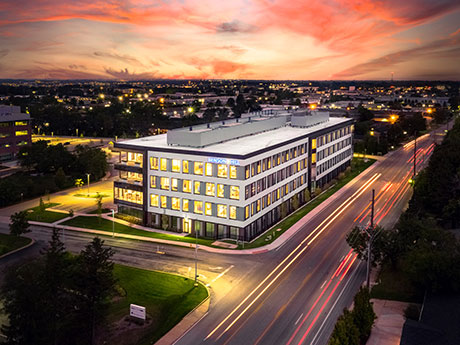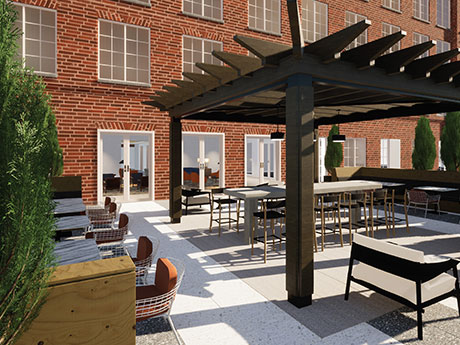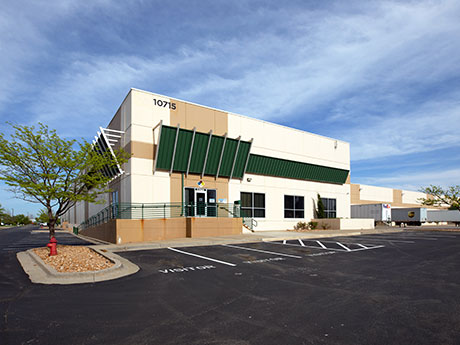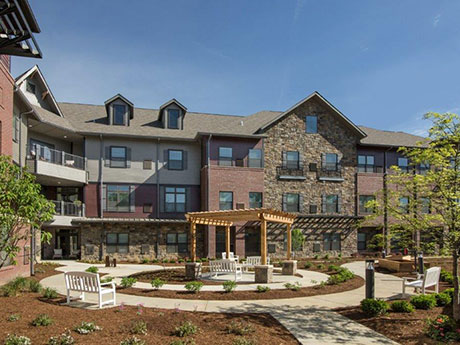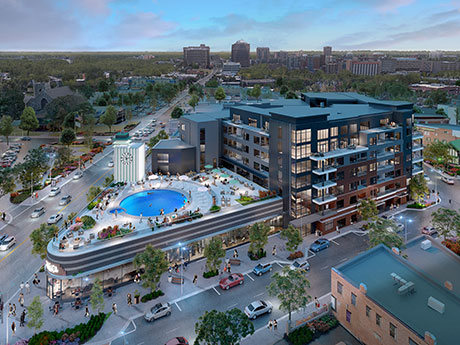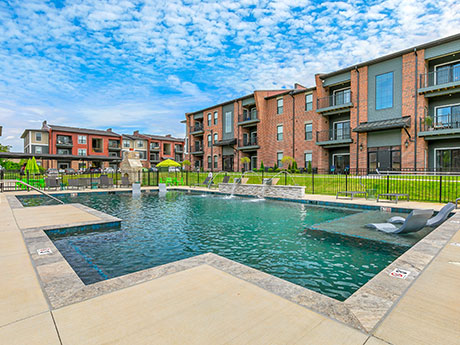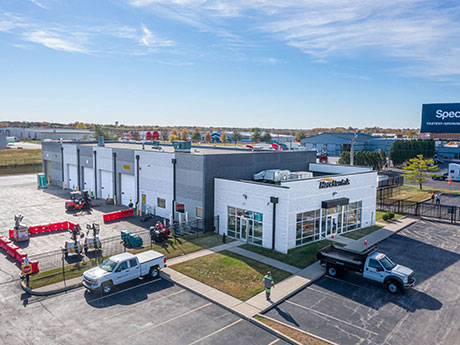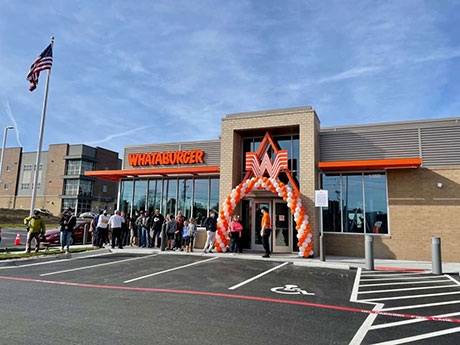By Scott Dunwoody, Cushman & Wakefield It’s not too much of a stretch to say that St. Louis’ life sciences sector dates back to Lewis & Clark’s Corps of Discovery and all the scientific findings revealed upon their return to the city in 1806. More than two centuries later, St. Louis remains at the forefront of life sciences. The region is a center of plant science research and a cornerstone of global agriculture technology, with institutions such as Washington University in St. Louis (WashU) and St. Louis University playing critical roles in the biotech and medical fields. These factors translate into significant economic development benefits for the region and a positive impact on the area’s commercial real estate market. St. Louis is home to the largest concentration of plant scientist PhDs in the world. All that talent supports and drives more than 750 plant and medical science organizations across the region, including large employers such as Bayer (formerly Monsanto), Bunge, Benson Hill, IFF, Novus and Pfizer, and has led to significant investments throughout the region. What’s more, St. Louis ranks No. 14 nationally in National Institutes of Health funding, having secured more than $3.3 billion in the past five years. …
Missouri
By Artie Kerckhoff and Joshua Allen, CBRE For businesses, the conversation around the return to office has shifted. Most companies find themselves considering how to entice workers back instead of when to call them back. It’s an interesting dynamic, born out of stopgap remote-working policies and catalyzed by an employee’s market. Where does this leave the St. Louis office market? The metro’s overall office vacancy rate remained steady at 12.9 percent at the end of the third quarter. Yet, leasing velocity has shown significant improvement with leases signed at newly constructed buildings like Forsyth Pointe & Commerce Tower in Clayton and Edge@West in Creve Coeur. In addition, a handful of tenants have signed new leases at existing prime Class A, amenity-rich buildings such as Centene Plaza C Building, The Plaza in Clayton and Shaw Park Plaza. The reason for this uptick is a trend that’s playing out in St. Louis and across the country: an overall flight to quality. Prime at a premium At the onset of the pandemic, office users signed short-term extensions and took a wait-and-see approach to get through the immediate crisis. Now, as those extensions expire, they’re migrating to prime Class A office space with collaborative, …
By John Hassler, Newmark Zimmer At the close of 2022, Kansas City’s industrial property market hit heights that would have been unimaginable only a decade prior. While Kansas City ranks as the 31st-largest MSA in the United States by population, it is the 16th-largest market nationally based on industrial square footage with nearly 315 million square feet of total inventory. Further, Kansas City ranks 10th nationally in the percentage of annual net absorption as compared with its market size and has added an impressive 62.5 million square feet of newly developed square footage over the last 10 years. Many factors have contributed to the market’s growth trajectory including the nation’s most geo-central location (a two-day truck drive to 85 percent of the continental U.S. population), the confluence of five Class-1 railroads (with four area intermodal centers), the intersection of four of the nation’s busiest interstates (including I-35 and I-70), an available and reasonably priced workforce, an abundance of industrial development sites in pro-development communities, and an experienced, well-capitalized concentration of developers headquartered in the area. Kansas City has leveraged those various logistical and strategic advantages at a perfect time to capitalize on an all-time high in industrial space demand with …
By Dan Thies, Sansone Group We are more than halfway through the year and the multifamily market in the St. Louis metropolitan area continues to grow. As of the first quarter, there were 5,112 multifamily units under construction in the metropolitan area. So far, the rise in interest rates and the increase in construction costs has not dampened the enthusiasm of investors and developers for constructing new units in this market. Vacancy rates continue to stay low and lease rates continue to increase. As long as these market conditions continue, developers are going to bring new units to market. The new units being built will reflect new design features, which many developers are implementing in their communities. One of the many design trends taking place across the country and in the St. Louis area addresses the rise in the older population becoming renters. Many members of the baby boomer generation are looking to sell their suburban homes to downsize into smaller, more practical spaces. Their children have moved out of the home, and they no longer need all the space or maintenance of a home. They want to pull the equity out of their home and place it in a …
By Mary Lamie, Bi-State Development Modern bulk distribution buildings under construction in the St. Louis region hit a historic high earlier this year, approaching 8 million square feet. The record level of construction illustrates the industrial real estate market in the southwestern Illinois and eastern Missouri region continues to expand to meet ever-increasing demand as world and domestic markets strive to move beyond the disruption that has defined the past two years. The need for reliable freight logistics and flexible supply chains is proving more essential than ever to keep economies moving, and regions that can meet those needs while delivering the modern bulk and manufacturing space distributors and developers demand will have the greatest potential for continued growth. In mid-2022, nearly 7.4 million square feet remained under construction in the St. Louis region, a level of construction 78 percent higher than 2021 and 47 percent higher than the most recent five-year average. Also noteworthy is the fact that 100 percent of the modern bulk construction projects underway is speculative. That represents more speculative activity in the region today than in 2019, 2020 and 2021 combined, a clear indication that developers believe the St. Louis market is a solid place …
By Chris Armer, Hoefer Welker People who call the Kansas City metropolitan area home know it’s a desirable place to live. From the robust job market and vibrant arts scene to its rich history and, of course, stellar sports teams, the Kansas City metro area attracts a diverse group of people. Kansas City is evolving and so are its housing needs. In recent years, the demand for multifamily development in Kansas City has grown, driven by a range of factors. Mass retirements and flexible work arrangements are shifting priorities, while the housing shortage and rising interest rates are sending prospective homeowners on the search for attractive alternatives. The multifamily housing trend stands to gain momentum, creating a space for discerning real estate and architecture firms with development expertise to pave the way in an evolving housing market. The great shuffle Much has been said about the Great Resignation, but the COVID-19 pandemic didn’t only affect young and midlife workers who left their jobs to pursue higher-paying and more meaningful employment. It also hastened the Great Retirement, a massive wave of baby boomers leaving the workforce, many of them earlier than planned. Now those homeowners are selling their suburban single-family …
Fueled by a trifecta of favorable cap rates, an underserved apartment market and sharp increases in market demand, St. Louis is starting to gain momentum with the potential to become a new multifamily hotspot. As investors and developers take note, capital that typically has been focused in higher growth markets on the coast and cities like Chicago and Nashville is starting to flow into the Gateway City. The fruit of these investments is now coming to market. Despite 20-plus percent increases in construction costs, 24 percent more units — 2,057 total — were built in 2021 compared with St. Louis’ five-year annual average. Nearly 4,000 additional units are under construction in the St. Louis region. Population, personal income and job growth are the key economic drivers of multifamily unit demand. In 2020 and 2021, all three of those markers are finishing on the upside in St. Louis after pandemic dips. Employment growth is particularly promising. After slight employment declines over the last five years, St. Louis employment has grown at an average annual rate of 2.7 percent for the last four quarters. CBRE forecasts positive growth of 2 percent for the next two years and 0.8 percent for the next …
This past year, many commercial real estate sectors and geographies that had been affected by the initial impact of pandemic-induced shutdowns demonstrated improvement. Across Missouri, we saw very robust levels of sales activity, as well as new construction and development — with more than $2.4 billion in overall commercial real estate sales volume through the end of third-quarter 2021. Although statewide growth was reported across all property types and sectors, industrial was especially strong, while retail emerged with slightly less consistency, but was positive nonetheless. The forecast for 2022 is bright, especially as retailers announce expansion plans and developers break ground on new projects. St. Louis is central to growth As an important secondary U.S. market, St. Louis and the surrounding areas are experiencing high levels of demand and activity. In the first three quarters of 2021, the St. Louis market reported $1.7 billion of overall commercial real estate sales volume, representing more than 70 percent of statewide activity. These statistics illustrate the sentiment of today’s active buyers who agree that St. Louis is a stable and attractive market for investment. Within the metro area, St. Charles County stands out as one of the fastest-growing counties in the country, reporting …
2021 was a historic year for Kansas City industrial real estate. The local market size eclipsed 300 million square feet of space, representing the 16th-largest industrial market in the U.S. Class A building inventory is nearly 44 million square feet, ranking 15th in the nation. Of the industrial building inventory, 14.4 percent is Class A, ranking ninth-highest in the country, suggesting the inventory that we have is quality compared with other U.S. markets. Capital markets are firm influencers with soft voices. Nationally, the amount invested is a record high. Rental rate growth is at an all-time high and investors are confident that this growth will sustain. While you may not read about where capital is being deployed, the institutional development and investment activity provide the output to see where institutions have comfort. Cap rates in the Kansas City area broke records and saw compression in the last year of 50 to 150 basis points depending on the asset class. This is a result of investors seeking return and believing in the long-term strength of tier II industrial markets and yield premium afforded in these markets compared with gateway cities. Well-positioned assets traded with cap rates in the low to …
To the surprise of many in the Kansas City retail sector, the end of 2021 looked much different than most anticipated when 2021 began. As uncertainty buzzed through the retail world, the flurry of 2021’s real estate activity was a welcome surprise. Retailers who embraced technology and adapted to the changing circumstances of today’s world were able to reap the benefits 2021 offered. As consumers took advantage of post-lockdown freedoms, brick-and-mortar retailers experienced a surge in sales volume. Throughout 2021, many national retailers and local Kansas City owners reported volumes exceeding 2019 pre-COVID levels. It’s comforting to report that retail leasing and sales continue to be strong, and overall Kansas City remains consistent in attracting retail business during these uncertain times. One of the most recognizable transformations in retail is the way in which technology seamlessly connects e-commerce and brick-and-mortar stores. Consumers can now use technology to satisfy their desire for the contactless fulfillment of their order, browse local inventory at grocery and retail stores for immediate pickup and grocery shop without entering the store. This list will continue to grow as acceptance of the technology accelerates. Another noticeable retail alteration is the addition of drive-thrus as well as …
Newer Posts


